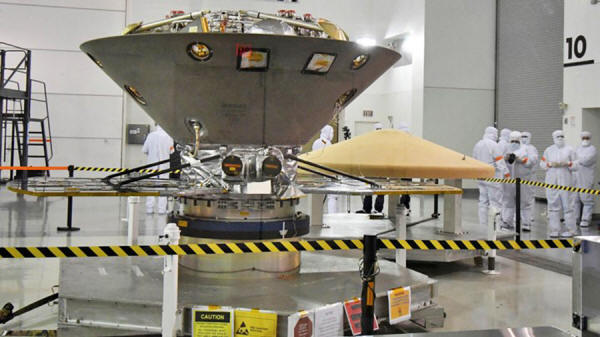|
from TheAtlantic Website
Spanish version Gene Blevins
Reuters could make it harder to stop Earth microbes from contaminating other worlds.
All this is in aid of "planetary protection":
NASA is bound to this
principle by international treaty, and makes every effort to uphold
it. After all, stowaway microbes from Earth could confound any
attempts to find actual extraterrestrial life on other planets.
Even NASA clean rooms have their own microbiomes - a common community of super-hardy species that somehow withstand the rigorous disinfection procedures.
These communities are dominated by Acinetobacter bacteria, which are typically found in soil and water. While other microbes disappear during the cleaning process, Acinetobacter persists.
Scientists have isolated strains from the surface of the Mars Odyssey orbiter, from the floors on which the Mars Phoenix lander was assembled, from the exterior of the International Space Station, and even from the station's drinking water.
Now, a team of scientists led by Rakesh Mogul from California State Polytechnic University at Pomona has discovered one of Acinetobacter's survival tricks:
His team, which was mostly made up of undergraduate students, took Acinetobacter strains that had been recovered from clean rooms, and reared them on vanishingly low levels of nutrients.
Under these extremely
restrictive diets, the bacteria could grow on ethanol as their main
fuel. They burned it for energy, and they used its carbon to make
their own DNA, proteins, and other essential molecules.
Even if they can't use these substances as energy sources, they can certainly break them down.
They can even withstand treatment with hydrogen peroxide, the chemical used in bleaches, detergents, and disinfectants.
But this new study says that,
It seems that the harsh, dry, and chemically bombarded environments of the clean rooms select for only the toughest bacteria.
And Acinetobacter strains are unusually tough as it is. They can resist hydrogen peroxide, desiccation, radiation, high pressures, and temperatures of up to 80 degrees Celsius.
Some strains can
shrug off antibiotics and cause
outbreaks of pneumonia in hospitals, although Mogul notes
that none of the strains that he studied are known to cause disease.
They might try using different types of solvents in rotation, to avoid selecting for a community of resistant microbes.
But since they need to kill the microbes without also killing the spacecraft,
Acinetobacter's persistence should be cause for awe rather than alarm.
Newspapers regularly print scaremongering headlines about the bacteria that lurk in everyday objects, from wallets to keyboards and doorknobs to phones.
But there's no escaping the fact that bacteria are omnipresent.
|


